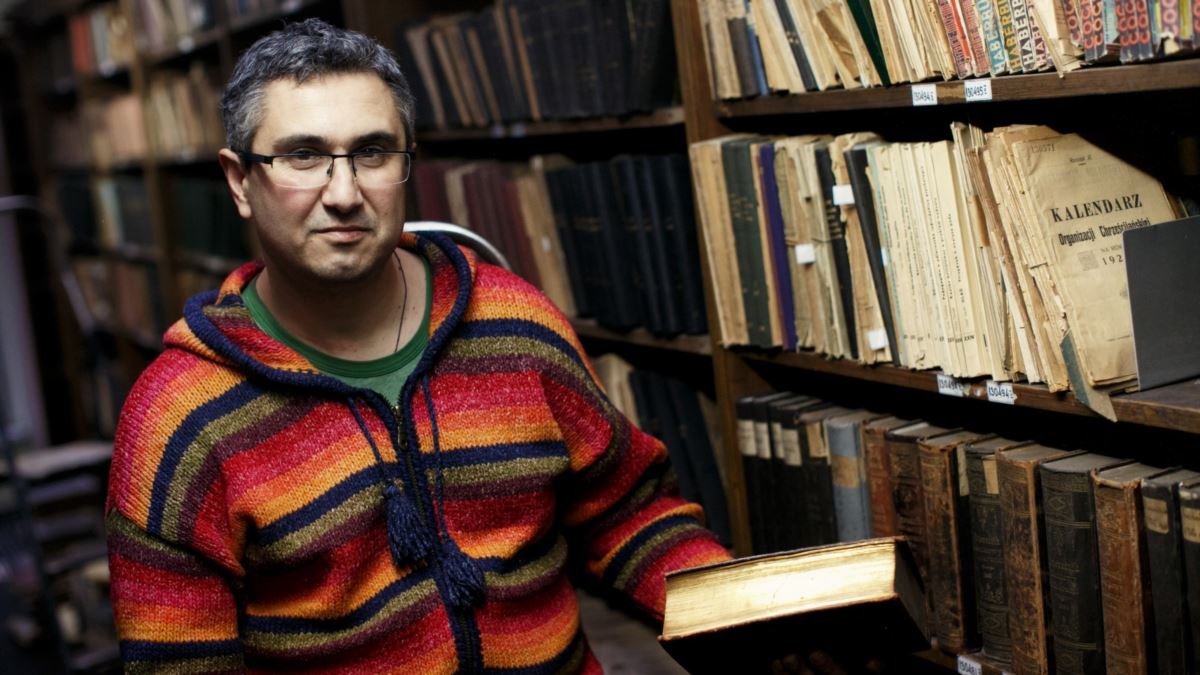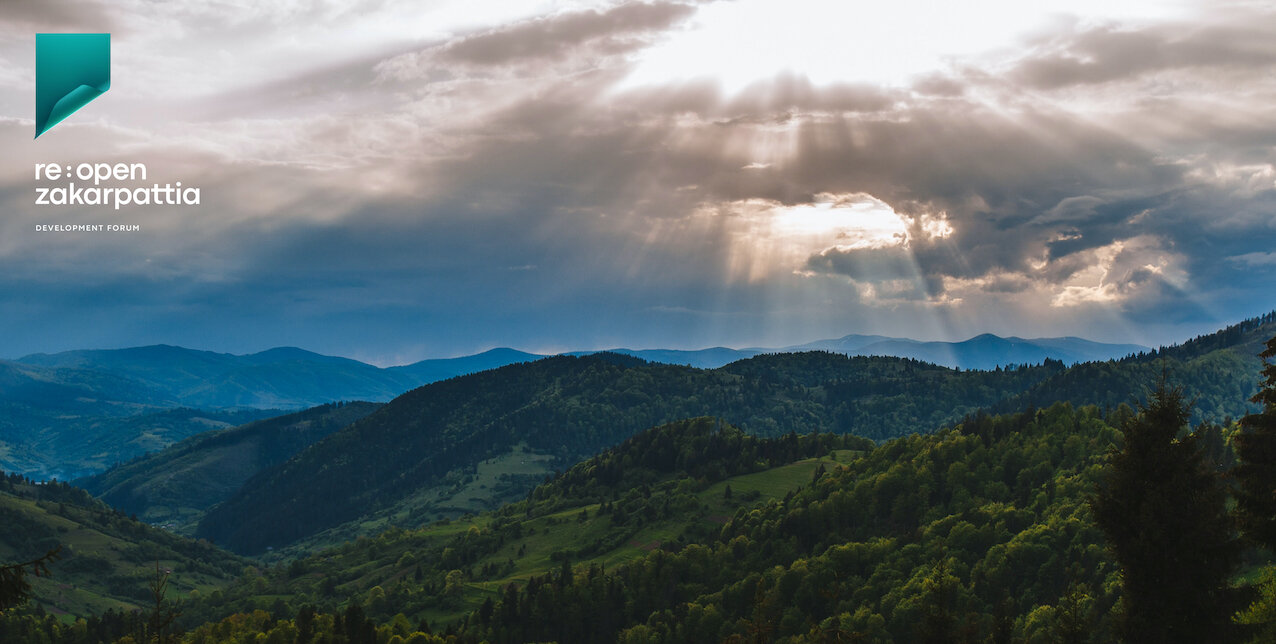Therefore, Zakarpattia as Ukraine’s gateway to the EU is not just a metaphorical expression but the real role of this region on the margin, full of contrasts.
This role was highlighted at the forum Re: Open Zakarpattia, conducted on 7-8 November 2020 and organized by the Institute for Central European Strategy and USAID.
61 speakers participated in the forum, including Ukrainian ministers, managers of domestic and international NGOs, representatives in the European Parliament, Ukrainian MPs, public intellectuals, writers, businessmen, as well as film directors connected to the region.
The keynote of the forum was that the success of Zakarpattia means Ukraine’s success as a whole. And here are the key problems and solutions for Ukraine’s reforms and further EU integration described by the speakers.
Overall, the region is located in the heart of Europe geographically, bordering Poland, Slovakia, Hungary, and Romania. Therefore, Zakarpattia is the most diverse Ukrainian region. Populated mostly by Ukrainians, it also hosts compact national minorities along its borders.
Conflicts over the language of instruction, symbols, and geographical names in Zakarpattia are quite common. Building a strong national and civic identity there is quite a challenge.
A short presentation of the region, its politics, culture, people, and economy was in the Forum’s announcement:
[youtube https://www.youtube.com/watch?v=u_45fScErlE&w=560&h=315]1. Ethnic minorities should identify with Ukrainian statehood and institutions to stop ethnic rivalry in Ukrainian border regions such as Zakarpattia

Yevhen Hlibovytskyi, Ukrainian researcher and the founder of the pro.mova project, and Ivanna Klympush Tsintsandze, a Ukrainian MP, stressed that Ukraine was underrepresented in Zakarpattia.

Tsintsandze said that while the state had other problems, such as war, it could not support the most problematic regions. At the same time, other groups were eager to take care of Zakarpattia. Partly neighboring countries provided various support to their minorities in the region, partly local criminal groups took local power and managed the region.
Therefore, in the eyes of locals, Ukraine became an abstract entity that neither needed them nor provided for them. Consequently, they are generally pessimistic about Zakarpattia and Ukraine as a whole, have high migration aspirations, and also are likely to break state laws for personal gain.
Hlibovytskyi noted that central power has weak control over Zakarpattia. Further, merely symbolic, linguistic, and ethnical identification of Ukrainians with Ukraine is no longer enough to foster statehood. Ukrainian citizens, both ethnic Ukrainians and minorities, should identify with state institutions as well.
This instrumental identity creation should not be underestimated. Neighboring countries, either intentionally or not, have already successfully accomplished it in Zakapattia, where Ukraine should make up lost ground.
National minorities are even more pessimistic. People think that since after Ukraine’s independence in 1991, and especially since the Euromaidan revolution in 2014, the situation has deteriorated, which objectively does not correspond to reality, at least in terms of the state of roads, transparency of local authorities, quality of public services.
2. Symbolic branding important to strengthen national identity, unite all Ukrainian regions

Vakhtang Kipiani, historian and author of the famous book The case of Vasyl Stus, emphasized the role of symbolical branding of the territory.
- About his book: “Medvedchuk effect”: censorship attempt fails in Ukraine as prohibited book sold out within an hour
He said that Zakarpattia is an example of a region where every meter of the ground was drenched in the blood of armies competing for the land. Yet competition for the region was not always military; today it continues in the cultural, political, and economic spheres. The danger of the “Russian world” should not be underestimated — even in western Ukraine.
“The influence of the ‘Russian world’ in Zakarpattia is much greater than the numbers show. The influence of the Moscow Patriarchate [Orthodox Church] in Zakarpattia is more problematic than we think, starting with the visuals: branding Zakarpattia Oblast with churches of the Moscow Patriarchate in the so-called synodal style, and not in the style of local orthodox architecture.”
Kipiani highlighted the role of soft power in the competition for influence over the region. Cultural and symbolic branding is important for the above-mentioned identification of locals with Ukrainian statehood.
Regarding language issues, a consensus is also present: 79% of people in Zakarpattia think Ukrainian should be the language of instruction at school. Only 11% think the language of instruction at school can be the language of national minorities. This roughly coincides with the ethnic makeup of the region, where tensions have grown with neighboring Hungary over Ukraine’s new language law providing Ukrainian as the only language of instruction starting from grade 5.

3. As a country with diverse historical backgrounds, Ukraine needs more exchange and cultural programs to integrate various regions
Yevhen Hlibovytskyi also noted that the problem of Zakarpattia, Donbas, or any other Ukrainian borderland region is that locals know little about the rest of Ukraine, as interregional travel still remains low They perceive it often from TV, even through the prism of Russian TV.
Therefore, popular stereotypes about different Ukrainian regions, such as fascist banderites in Lviv, Russian immigrants in the east or Hungarian separatists and smugglers in Zakarpattia, become popular. Using these stereotypes, Russia tries to drive Ukraine towards disintegration.
To counter this, and also to strengthen self-identification with Ukrainian people and Ukrainian institutions, more interregional programs and especially exchange programs are needed.
In 2019, Ukraine started internal exchange programs between schools from different regions. As soon as the pandemic permits, this program should be broadened to the universities and expanded in scope so that new generations of Ukrainians know their country from various perspectives.
4. Unification through transport more important than one might think
Currently, it takes more than 14 hours to travel 800 kilometers from Zakarpattia’s regional center Uzhhorod by train through the mountains to Kyiv. Also, there is no flight connection since Uzhhorod airport does not see regular flights. This is “an awful situation,” said panelists of the discussion dedicated to transport, since it aggravates the mental mapping of Zakarpattia as disunited from the rest of Ukraine. Even despite the state border, Zakarpattians can travel 20-150 kilometers to the EU, much faster than to Kyiv, let alone a further 1,500 kilometers to eastern Ukraine.
Recently, several projects have been launched to solve this problem.

In particular, Vitaliy Tsvihun, deputy head of Zakarpattia state administration, mentioned the new state program of modern Intercity+ trains expanded to Zakarpattia. They should connect the region to Kyiv in just nine hours. Several trains have already undergone testing, with the project awaiting the last portion of funding for full introduction into service.

Tetiana Romanovska, director of the International Airport in Lviv, explained how the airport in Uzhhorod can operate. Located near the Slovakian border, the airport could not be opened without the agreement with the Slovakian side. However, a month ago the governments of the two countries signed the relevant agreement, unlocking the reconstruction and opening of the airport. The planned airport can not only connect Zakarpattia with the rest of Ukraine but also potentially become an aviation hub for central Europe, situated on the crossing of various rail and road trading and passenger lines.
5. Joint border control with EU countries — the next step in integrating EU and Ukraine

As Iryna Sushko, director of the NGO Europe without barriers, emphasized, joint border control is the next step of Ukraine’s integration with the EU, after the liberalization of the visa-free regime for Ukraine in 2017. While the first diplomatic agreements on joint border controls were already reached in 2018, the practical implementation of the program has not started yet.
Sushko said that Zakarpattia is the most important region for joint border control, bordering four EU countries and having the highest number of crossing points. Successful joint border control paves the way for further liberalization of movement between Ukraine and the EU. However, the program may stagnate, particularly in Zakarpattia, due to high numbers of people illegally holding both Ukrainian and Hungarian citizenship. Joint border control will force people to use only one passport and neither of the sides is interested in this.

Ukrainian Minister of Foreign Affairs Dmytro Kuleba was also present in the forum virtually. In his short address he emphasized the goals of the forum and prospects of Ukraine’s westernmost region in the center of Europe:
“Zakarpattia is the Ukrainian gateway to Central Europe. To a large extent, Zakarpattia is a mixed Central Europe. It is in Zakarpattia that different cultures and traditions have united. But I emphasize that they united here, on Ukrainian land, in Ukraine… I am absolutely convinced that Ukraine will continue to develop as a European state. But Europe is very big. That is why in a greater Europe we must first position ourselves as a Central European state. And the discussions in various panels are essentially about Ukraine’s European integration. It’s about how Zakarpattia can become an example of how Ukraine is rethinking itself, rediscovering itself.”
Read also:
- Separatism Transcarpathian style: is Hungary aiming to grab a part of Ukraine?
- Russian as a minority language in Ukraine vs Russian as Putin’s weapon: Is there a compromise?
- Why Ukraine’s language law is more relevant than ever
- The struggle for Carpatho-Ukraine (1938-1939), or how WWII started for Ukrainians
- Attack on Hungarian centre in Ukraine: three Poles charged with terrorism in German journalist-planned plot
- Ukrainian-Hungarians that have died fighting for Ukraine’s freedom
- Ukraine and Hungary move to settle differences over national minority legislation


